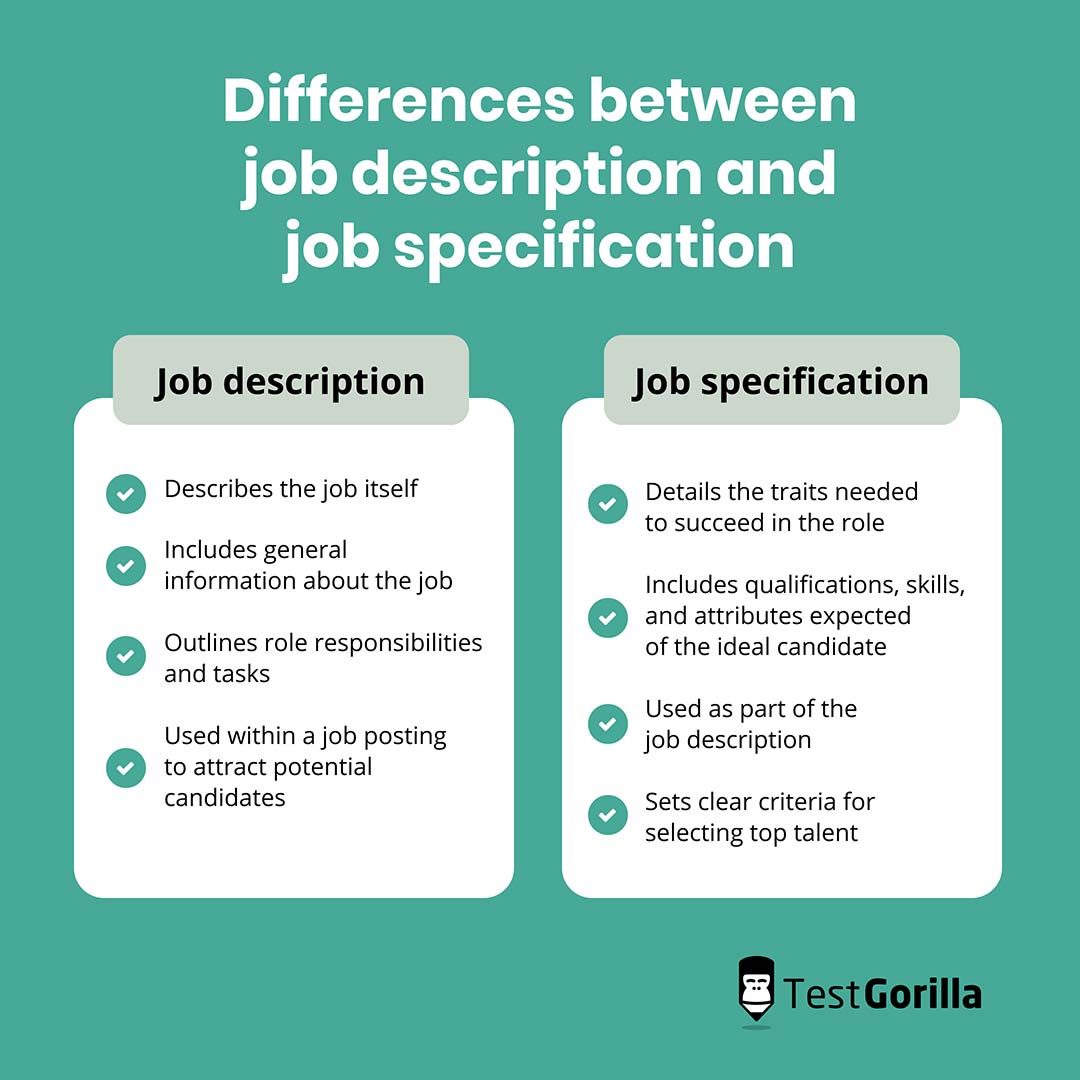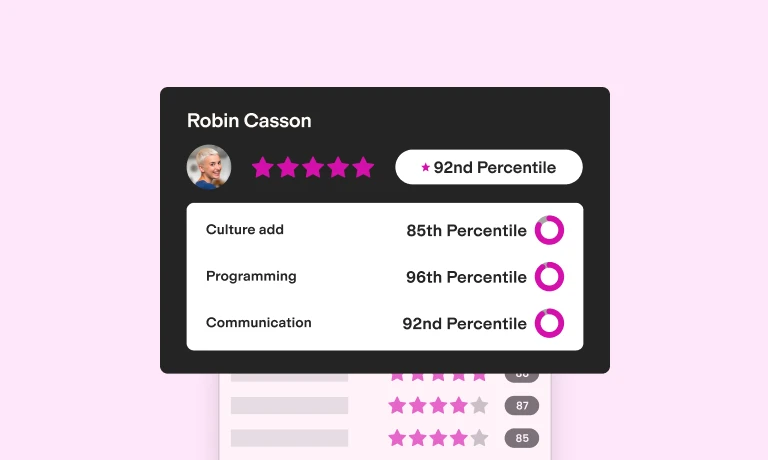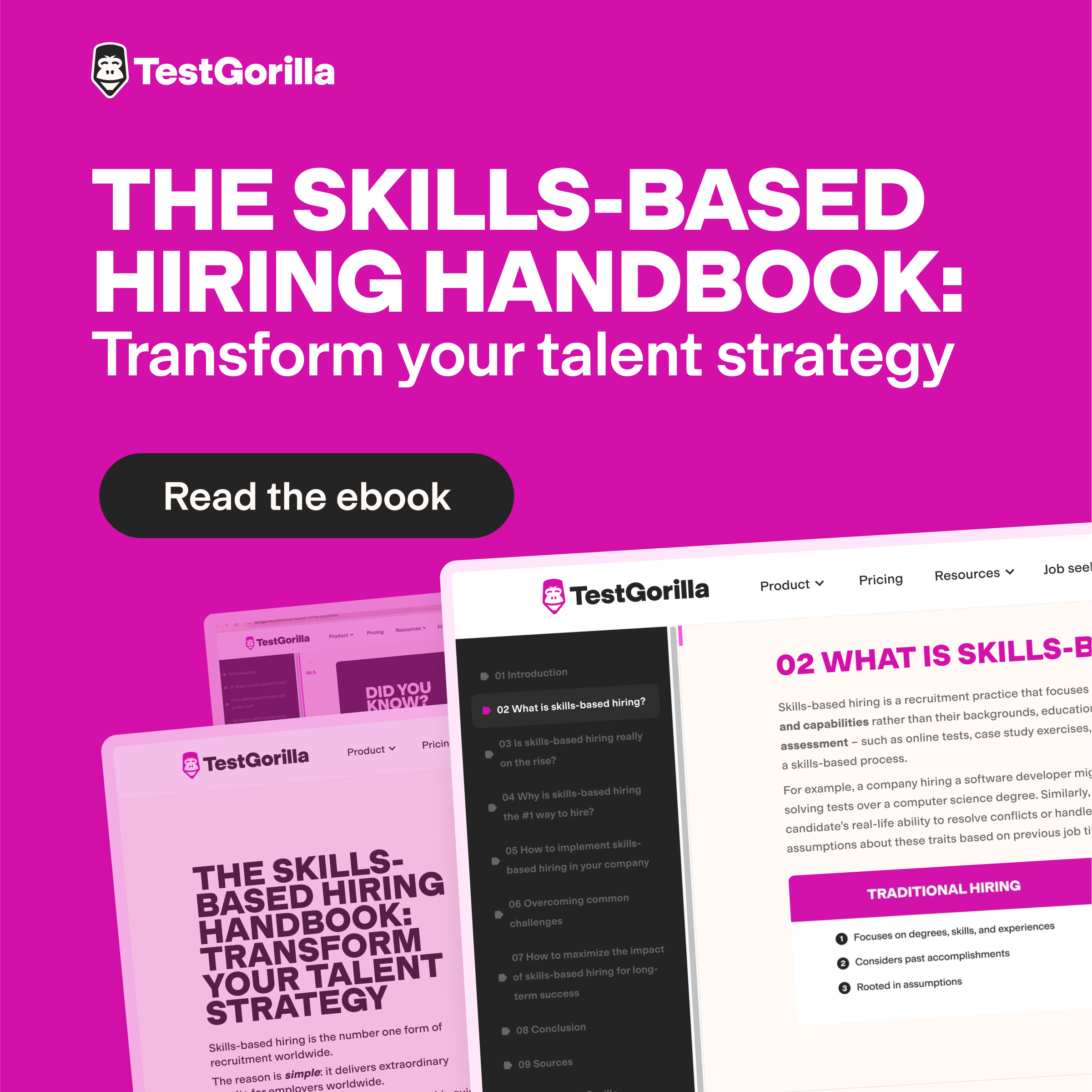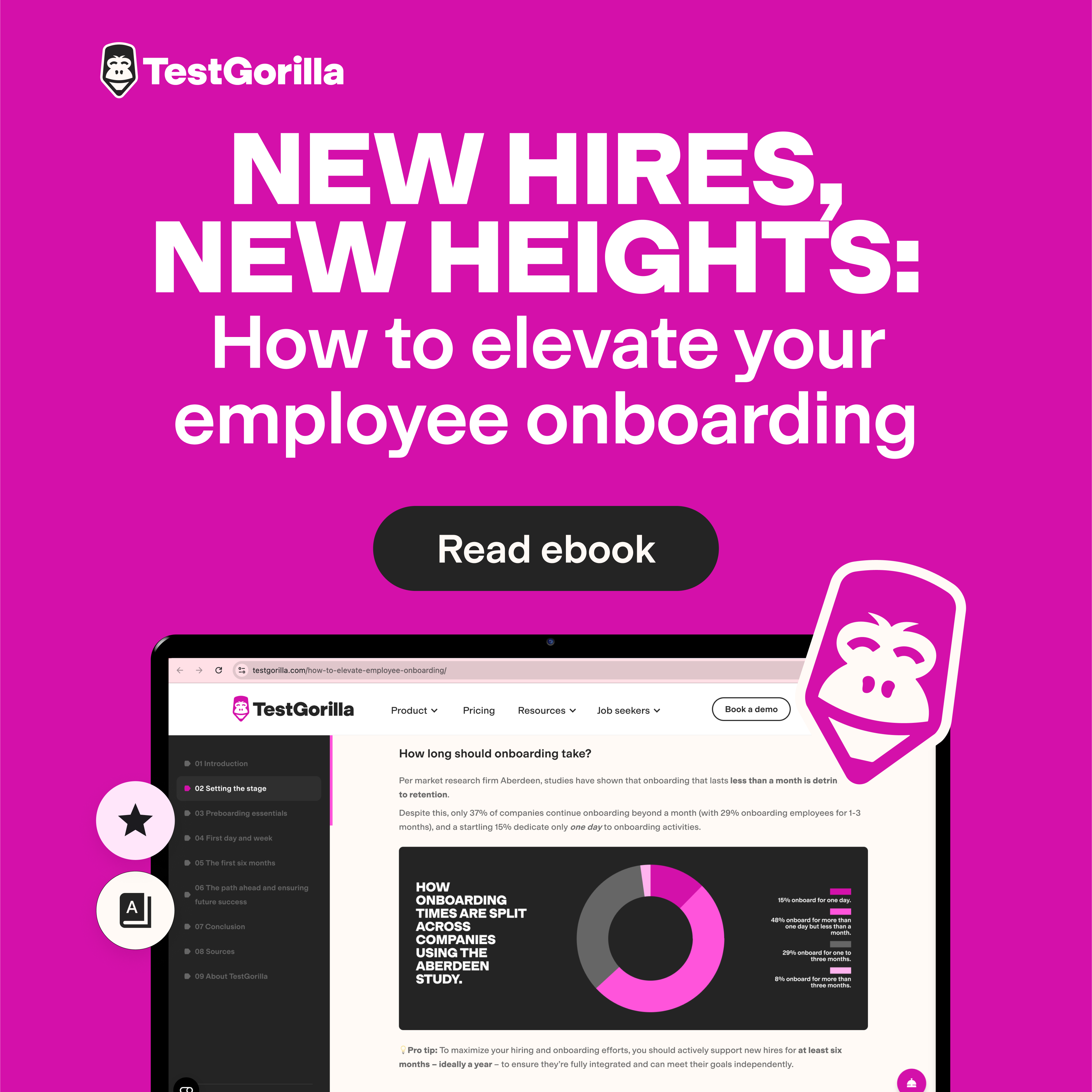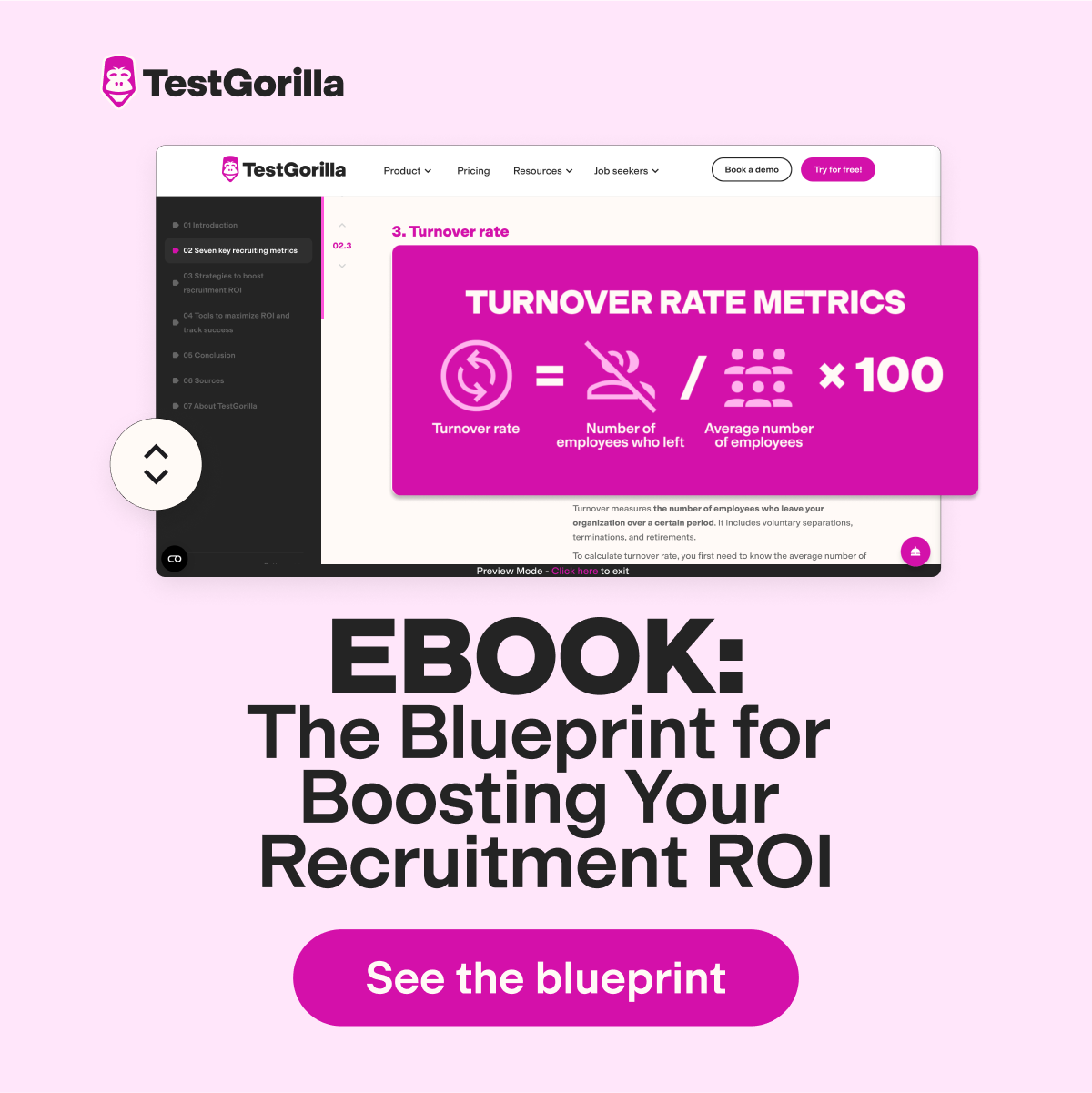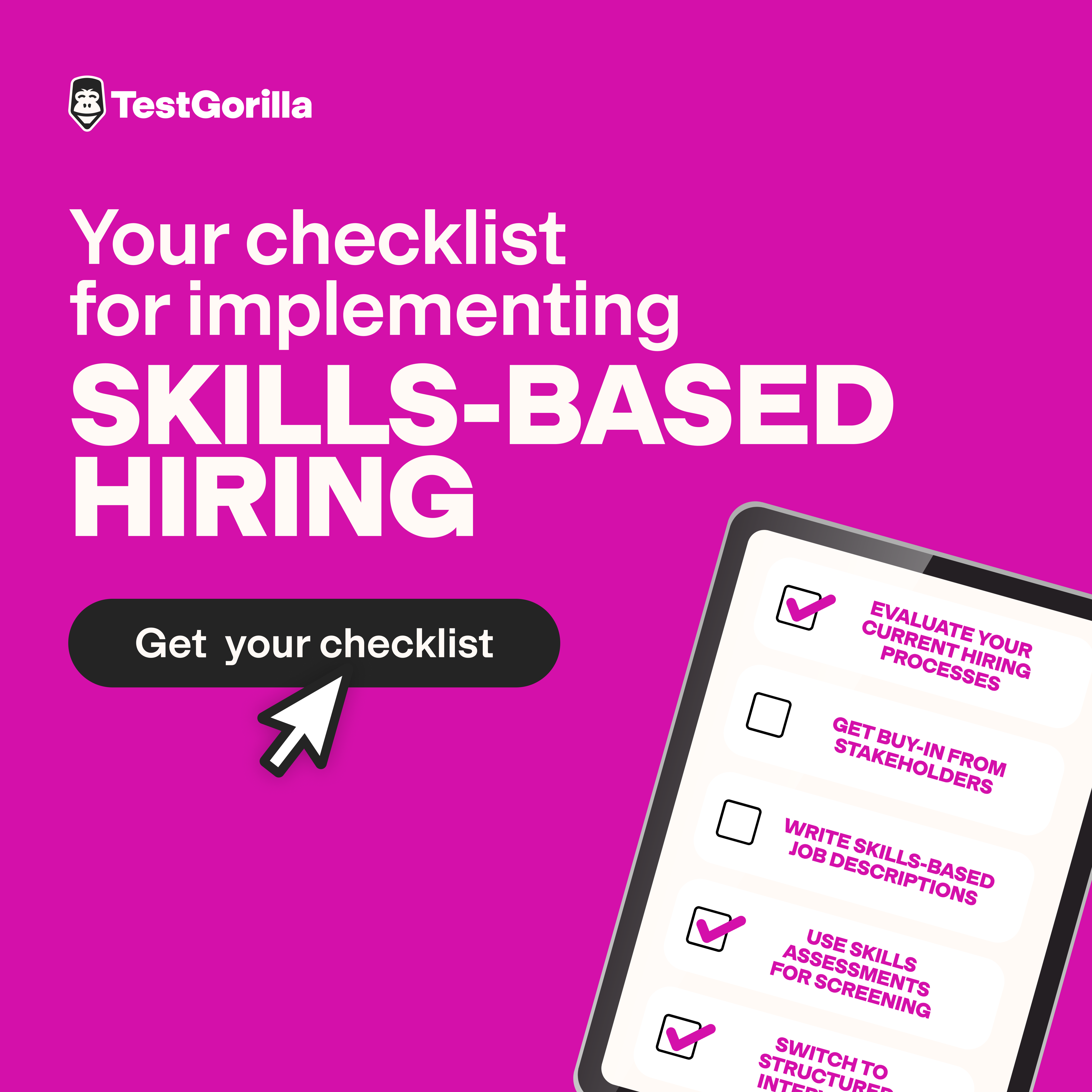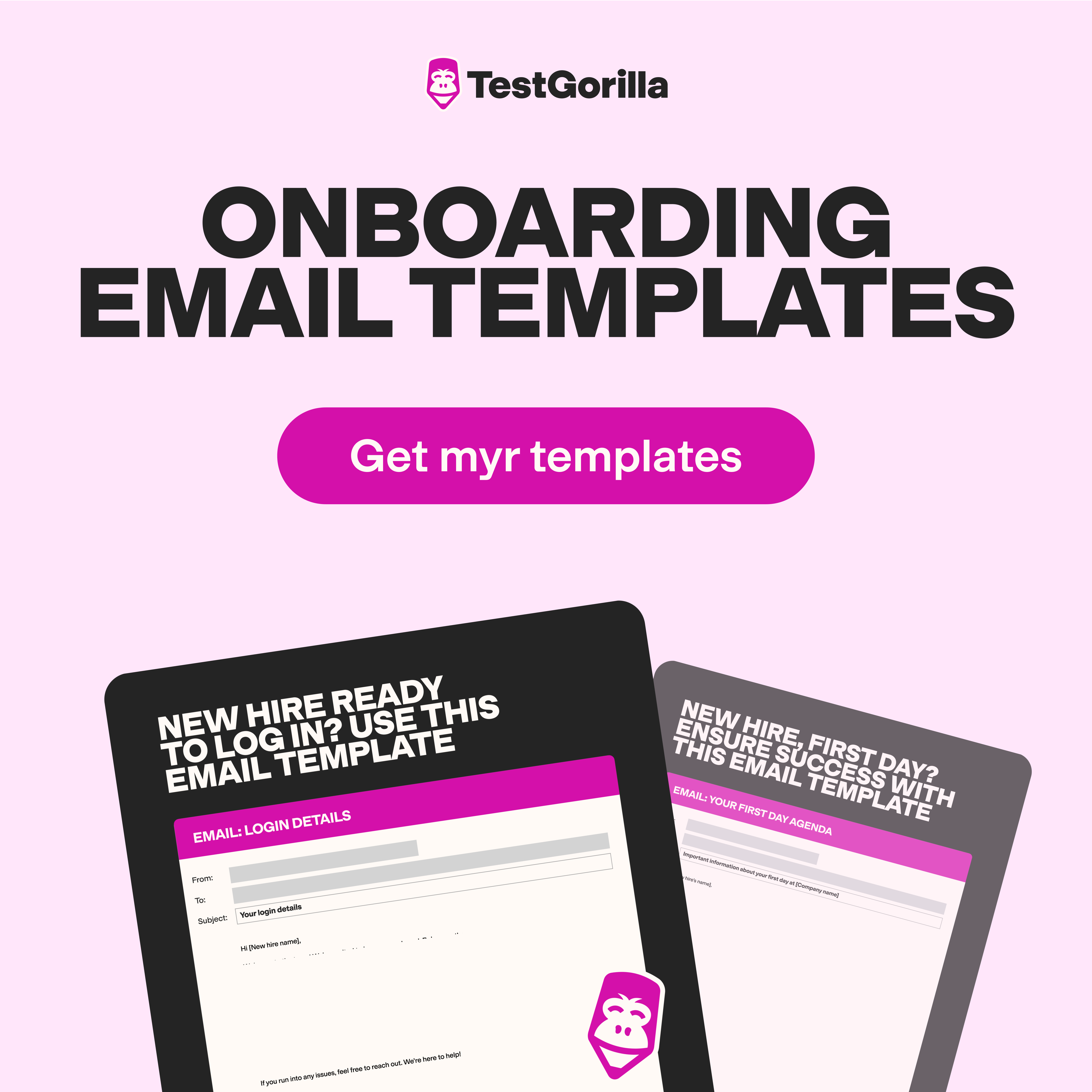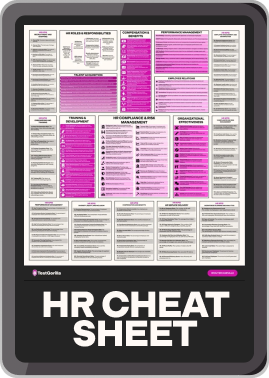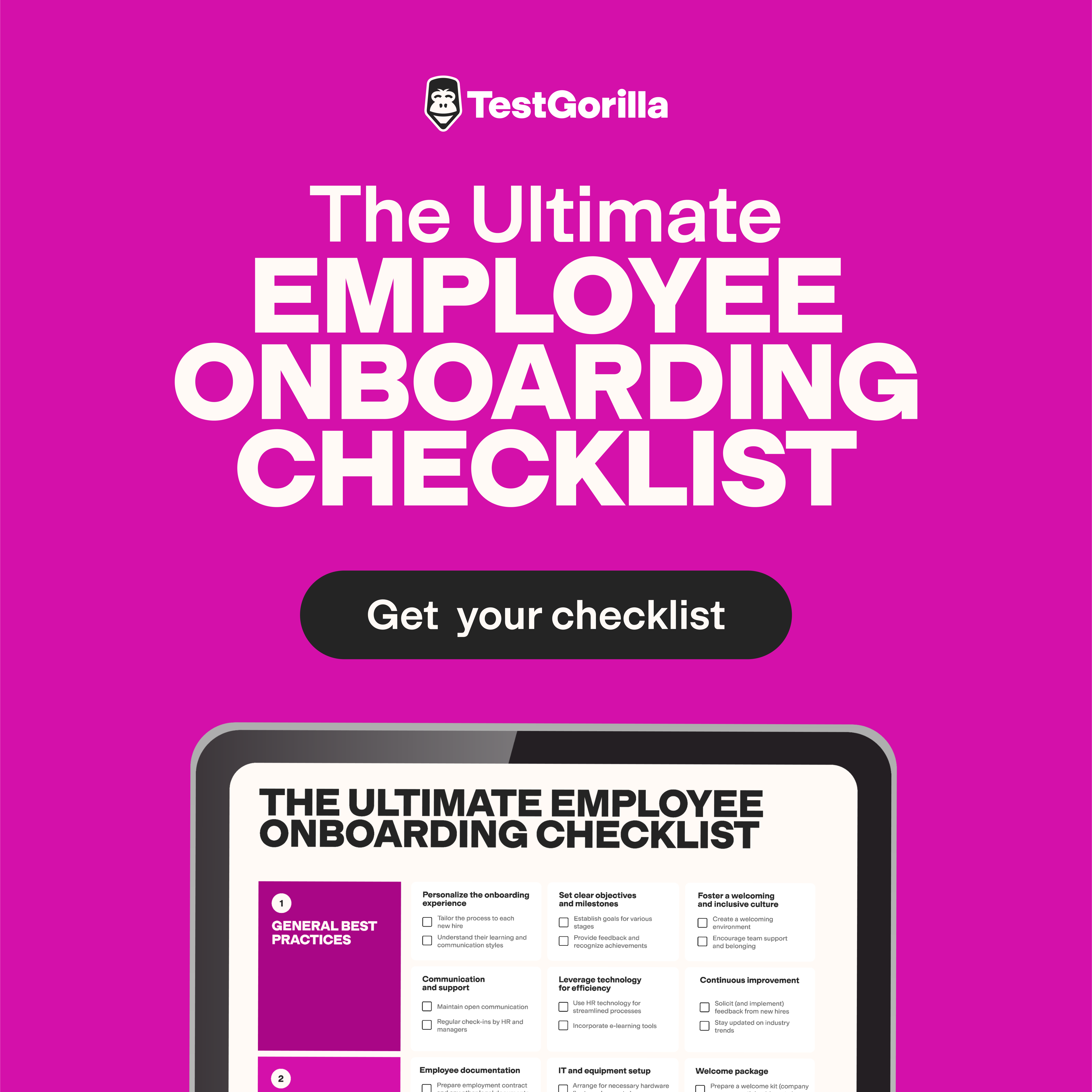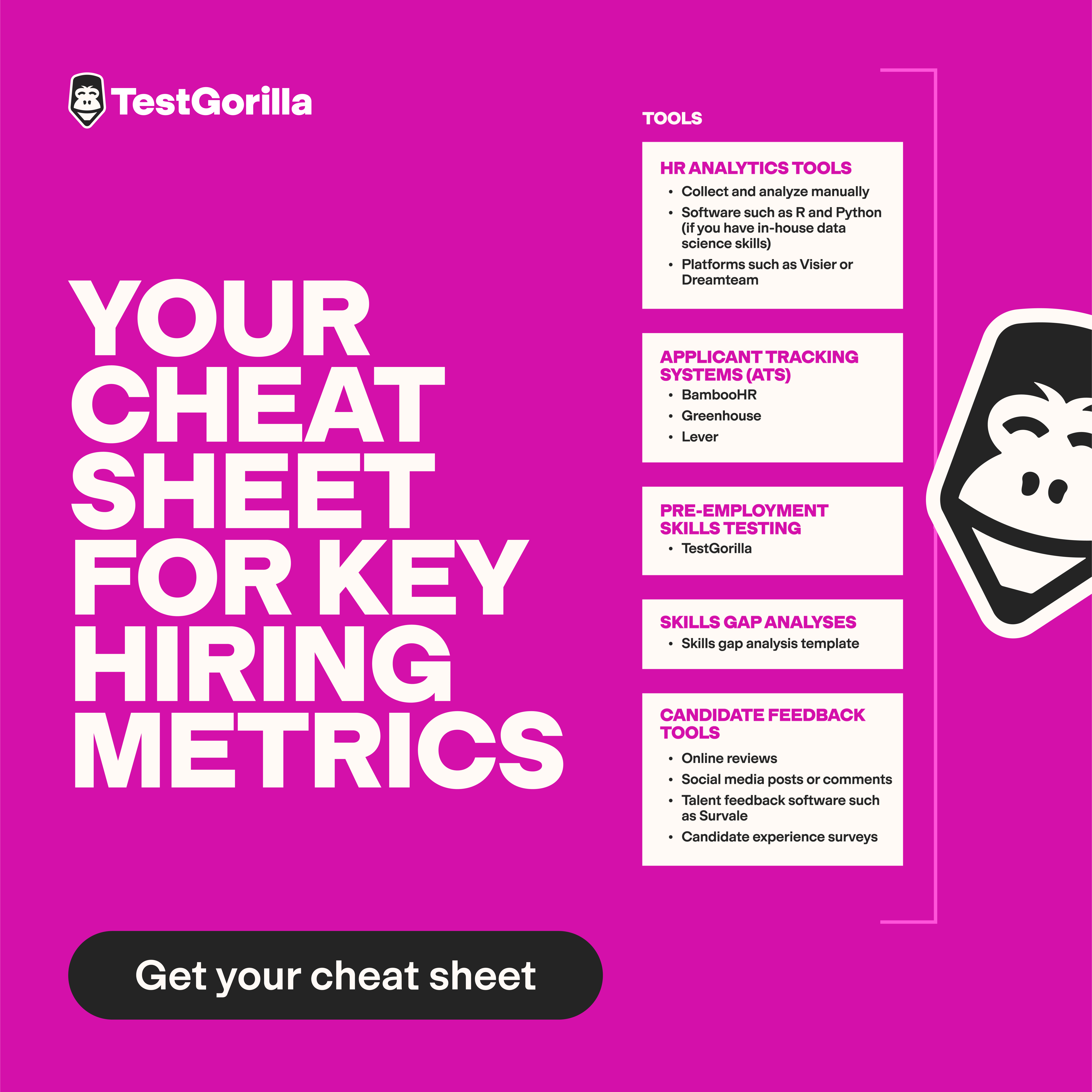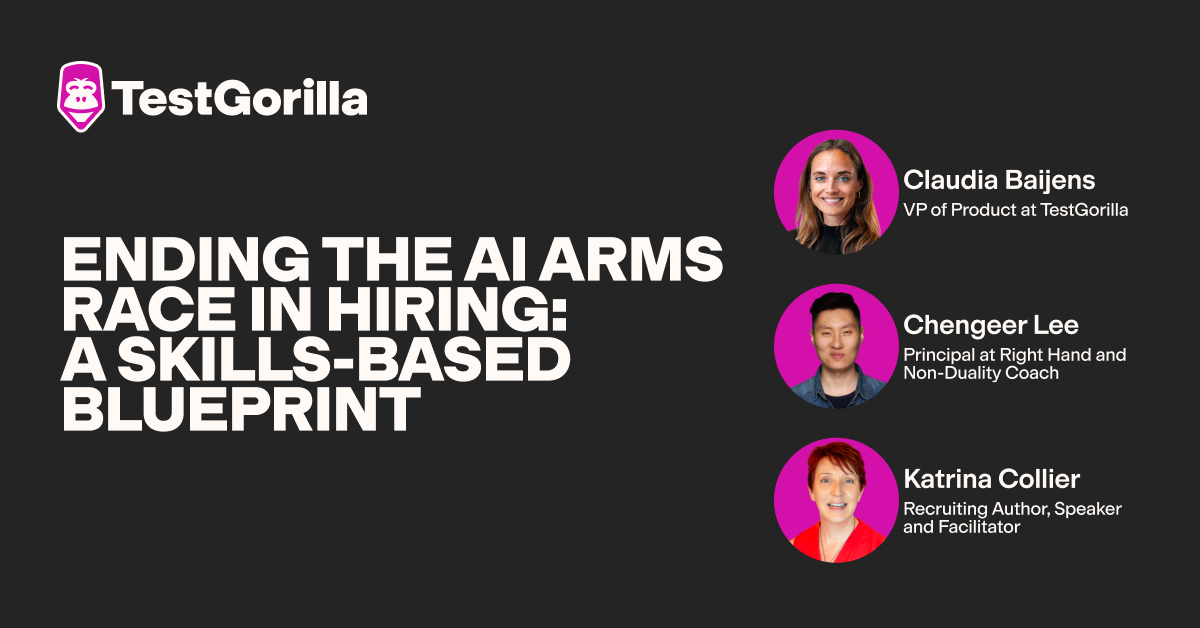Job specification vs. job description: The differences explained
Although they may seem similar, job descriptions and job specifications have different uses in recruitment. A job specification can make up part of a job description, but you won’t find a job description in a job specification. It’s often challenging to draw a line where the description ends and the specification begins.
However, getting this right is a crucial part of a skills-based hiring approach, which can ensure you attract highly qualified candidates and set clear expectations for your open role.
Sound complicated? Don’t worry – we’re here to help.
This article covers everything you need to know about job specifications vs. job descriptions and how to use them effectively. Plus, we explain how to use TestGorilla to streamline your recruitment process.
What is a job description?
A job description is used to advertise open positions at a company. It states basic information about and primary responsibilities of the role. A job description can also include details about the company’s culture, mission, and values. It should focus on the skills candidates need to succeed in the role, avoiding words and phrases that can confuse or deter top talent.
Typically, a hiring manager will write a job description, and a member of the HR team will review it to ensure the language used is neutral and doesn’t discriminate against any protected groups.
What is a job specification?
A job specification – sometimes called a person specification or an employee specification – details the hard and soft skills, personality traits, and other characteristics a person will need to fill a role. It usually makes up part of a job description.
The best insights on HR and recruitment, delivered to your inbox.
Biweekly updates. No spam. Unsubscribe any time.
Differences between job description and job specification
The main difference between descriptions and specifications is that a job description describes the job itself, while a job specification details skills and traits needed to succeed in the role.
They also differ in what they include and how they’re used in recruitment. Let’s break this down.
What they include
A job description includes general information about the job – for example, the job title and location, who the employee reports to, compensation and benefits details, core duties, etc.
On the other hand, a job specification details the qualifications, skills, and attributes expected of the ideal candidate. These include requirements related to educational background, professional experience, technical and interpersonal skills, specialized knowledge, and relevant certifications or licenses.
How they’re used in recruitment
Job specifications and job descriptions serve distinct purposes in recruitment.
A job description is used within a job posting to attract potential candidates. It offers a broad overview of an open position, helping prospective applicants understand the job’s daily requirements and assess whether the role aligns with their skills, experience, and career goals.
Because job descriptions outline specific responsibilities and tasks related to a job, they help hiring managers and recruiters measure applicants’ ability to meet these operational requirements.
Meanwhile, a job specification is used – sometimes within a job description – to provide a clear picture of the qualifications and attributes expected of applicants. They help ensure you hire someone with the right technical skills to excel and the necessary behavioral traits to mesh with your existing team and contribute to a positive work culture.
Specifications are a fantastic screening tool, as they give you a clear set of criteria for selecting top talent from your applicant pool. You can directly compare applicants’ skills, experience, and qualifications against what’s outlined in the job specification and identify the most suitable candidates.
Using a job description and specification together clarifies the exact type of candidate you’re looking for. This simplifies the recruitment process and helps you avoid mis-hires.
Finding your new hire with TestGorilla
Well-written job descriptions and specifications help increase the quality of the applications you receive and provide a clear list of qualities to look for in applicants as you create your candidate shortlist. To get the most out of your descriptions and specifications, follow them up with pre-employment tests that measure the skills you’re after.
TestGorilla is the perfect platform for this. It offers more than 300 scientifically validated tests so you can ensure your candidates’ skills align with your job specification. These include technical skills tests, personality tests, cognitive ability tests, and more.
Use up to five tests in a single assessment to objectively measure candidates’ abilities, benchmark candidates against one another, and find your next great hire.
Improve your recruitment process with TestGorilla by requesting a free live demo or signing up for a free account today.
Related posts
You've scrolled this far
Why not try TestGorilla for free, and see what happens when you put skills first.


